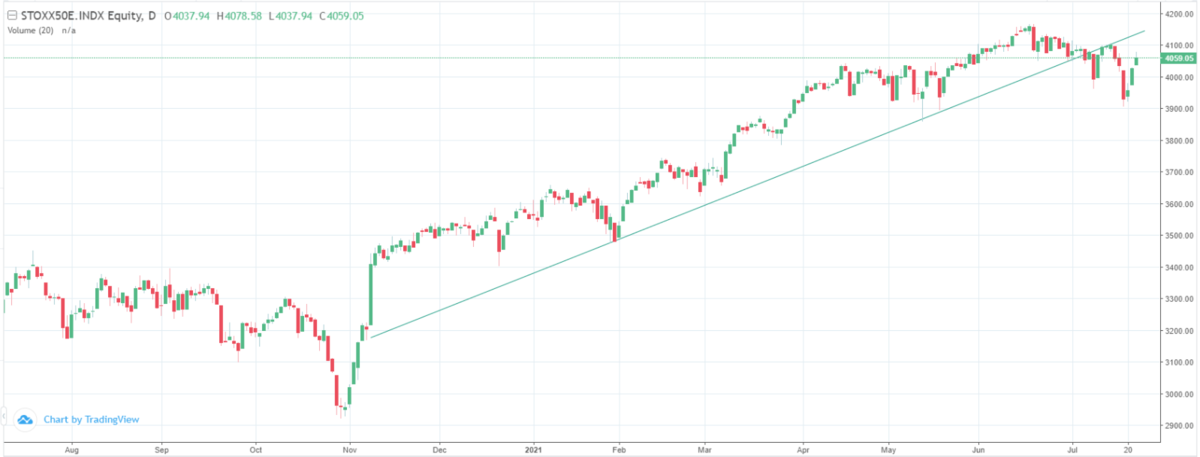Global Macro/Metals
Post-pandemic labor and goods shortages in Europe and in the US have been a sign of the strong growth resulting from the successful vaccination program. The spread of the Delta variant is offsetting the benefits of vaccination in countries which have either used a non-mRNA vaccine or countries which are adopting a very low tolerance to infections. Shortages have impacted commodities where the quick increase of consumptions have moved many commodity prices higher, translating into more expensive goods in general. The market consensus is for a transitory inflation with a rapid price normalization (the same may occur in commodities which have an elastic supply). With this fear of inflation, the Fed is taking a more backward-looking approach of average inflation targeting (thus keeping rates low) and is removing the tail risks of market’s pricing of inflation. This makes gold trading at a large discount to the current real rate, in that scenario even if the upside may take time to materialize, the price below 1800 is at good value compared to all other commodities.
Energy
The July OPEC+ meeting resulted in a lack of agreement and further uncertainty into the path for a gradual increase in production through 1Q22. Physical market is tightening and as inventory gets to low levels, a rebalancing should be more severe for increased production next year. Price volatility will likely rise, with the release of the August Saudi Official Selling Price (OSP) as the next key catalyst. If the current impasse leads to an outright price war (rather improbable but still possible), the market will be flooded with crude and we may see a sharp correction on the downside. The petroleum sector was up 7% in June, the lack of progress on US-Iran talks that could lift US sanctions on Tehran helped elevate prices. Natural gas moved up by 21% (the best performing commodity across all sectors), due to increased expectations of the LNG sector (Asia and Europe) and additional cooling demand in the US caused by hot weather.
Agriculture
The Biden administration is considering relief for oil refiners on the biofuel blending mandate; that will impact the consumption of soybean and corn as they are required by law to mix biofuel in the field supply or buy biofuel blending credit (corn +6%, soybean -2.2% in June). The wheat complex had adverse weather conditions in the beginning of the month but improved thereafter, prices also rebounded after the release that China is likely to continue importing wheat in order to feed its livestock as the grain is being used as a substitute for (more expensive) corn.
Volatility
There was no significant move in volatility for all sectors throughout June. While equity markets continued on their unstoppable uptrend, both VIX and VSTOXX are down by 1 percentage point on the month to 15.83% and 18.18% respectively. Although this is still quite high compared to the 10-12% we were used to pre-covid, the consistent downtrend over the past few months seems to be headed there. Oil, which also showed very consistent gains in underlying, saw implied volatility unchanged in the low 30s, which could be categorised as the higher end of a low volatility regime. In the precious metals sector, gold implied volatility is unchanged at 13% while silver implied volatility is down from 30% to 25%, after both commodities underlyings reverted their May gains. Only the agricultural sector saw some gains in implied volatility, up from 37% to 40% for corn and from 20% to 28% for soybean with underlying prices continuing their recent correction.
Source: Four Elements Capital


